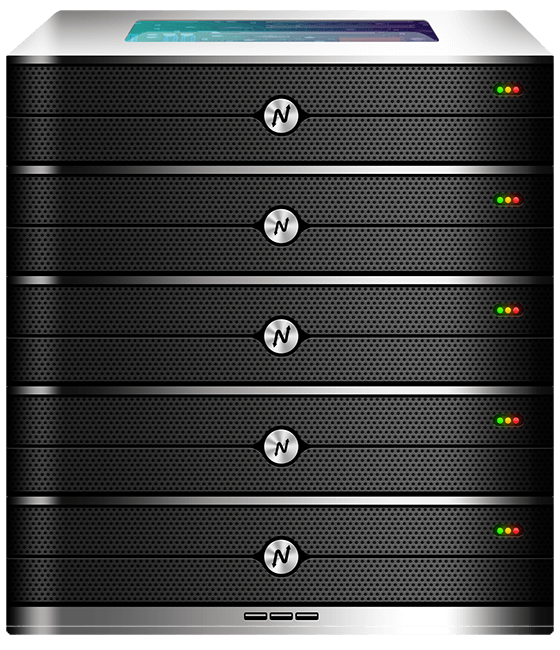A quick CNAME test can save hours of downtime during a launch or migration. When you point a subdomain to a service, verify the CNAME record to ensure traffic flows correctly. This matters globally because DNS mistakes affect visitors everywhere, not just where your company is based. In the first 100 words you need clarity, and a practical CNAME test gives that clarity by confirming DNS propagation, TTL behavior, and mapping to the correct target.
Indian hosting infrastructure has matured into a robust option for international teams doing DNS work. Indian data centers are cost-effective, offer low latency across Asia with competitive global speeds, and maintain strong security and compliance. For teams implementing DNS changes, reliable provisioning and fast support reduce the risk of misconfiguration. In this guide you will learn exactly how to run a CNAME test, what the results mean, and which XenaxCloud plans are suitable for different DNS and hosting scenarios.
- 1 Website Host
- 15GB SSD Storage
- 100GB Bandwidth
What is a CNAME test and why it matters
A CNAME test is a simple verification that a canonical name (CNAME) DNS record points a hostname to another hostname correctly. Use a CNAME test when you map a subdomain like app.example.com to a service provider’s domain such as service.examplehost.com. The CNAME record tells resolvers to look up the target hostname instead of an IP address. Running a CNAME test confirms the target resolves and that the DNS chain is intact.
Technically, CNAME stands for canonical name and is used to alias one name to another. It is different from an A record, which points directly to an IP address. A CNAME test checks that the alias exists, that the target resolves to an address, and that there are no conflicting records such as an A or TXT record at the same name. A thorough CNAME test also inspects TTL values and propagation across multiple DNS resolvers. Performing this test reduces downtime risk and improves reliability for launches, CDN integrations, and email provider setups.

Quick CNAME test checklist
A short checklist simplifies the CNAME test process and prevents basic errors.
- Confirm the exact hostname to add as CNAME.
- Ensure no A, AAAA, or other records exist at the same name.
- Add the CNAME record in your DNS management console.
- Wait for DNS propagation but verify immediately using public resolvers.
- Use dig or nslookup to validate the chain.
- Check TTL values and set them appropriately for future changes.
Use simple commands for the CNAME test. For example, on most systems run dig +short CNAME app.example.com to see the alias. If the output shows the provider host, your CNAME test passed at that resolver. Next, run dig +trace app.example.com to follow resolution from root servers down. Repeat with public resolvers like 1.1.1.1 and 8.8.8.8 to test global propagation. A robust CNAME test covers at least five public resolvers to reflect varied caching and regional behavior.
How to interpret CNAME test results
A CNAME test can return a few common scenarios. If you see the expected hostname returned, the record is visible to that resolver. If the test returns no record, you may have a missing or mistyped CNAME entry. If the test shows an A record instead, you might have conflicting records at the same name, which prevents a CNAME from functioning.
TTL values tell you how long caches will hold the result. Short TTLs let you roll back faster but increase query volume. Long TTLs reduce DNS traffic but slow down changes. For a planned switchover, set short TTLs 24 to 48 hours before you change DNS, run a CNAME test during the switch, and revert TTLs afterward to reduce load.
A CNAME test also reveals chaining issues. Some services require a direct CNAME to their domain, while others accept chained CNAMEs. If your CNAME test shows multiple aliases, confirm the provider supports CNAME chaining and that there is no circular reference. Misconfigured chains cause intermittent failures and higher latency.
Tools and commands for an effective CNAME test
You can perform a CNAME test using built-in utilities and web tools. Here are practical commands and what they show.
dig +short CNAME sub.example.com— returns the alias if present.dig +trace sub.example.com— follows the resolution path from root, useful for tracing propagation.nslookup -type=CNAME sub.example.com 8.8.8.8— queries Google DNS explicitly.- Online tools — many public DNS checkers show global propagation across multiple locations, which is useful for a final CNAME test before going live.
Use these commands during off-peak minutes first, and always test from different networks to understand how cached results vary. If a public tool shows different results in Europe and Asia, you may need to wait for full propagation before depending on a successful CNAME test for production traffic.
Comparison: Indian servers vs US, Canada, Germany, UAE
The region where your origin server and DNS provider operate affects CNAME behavior and propagation speed. The table below compares key attributes that matter when running a CNAME test and managing DNS for global applications.
| Criteria | Indian Servers | US/Canada | Germany | UAE |
|---|---|---|---|---|
| DNS Propagation in Asia | Fast | Moderate | Moderate | Fast |
| Global Resolver Reach | Competitive with CDN | Very Strong | Very Strong | Good |
| 24/7 Support | Yes (local + global) | Yes | Yes | Yes |
| Provisioning Speed | Instant / Fast | Fast | Fast | Moderate |
| Uptime & Reliability | High | High | High | High |
This comparison shows why hosting and DNS choices in India often pair well with a CDN to serve global traffic reliably after a successful CNAME test. If your audience is primarily in Asia, an Indian origin reduces latency and simplifies DNS strategy.
Real-world use cases for a CNAME test
- SaaS onboarding: When customers add custom domains, instruct them to add a CNAME and run a CNAME test to confirm mapping. This prevents misrouted traffic and speeds activation.
- CDN integration: Point
cdn.example.comvia CNAME to a CDN provider. Use a CNAME test after setup to ensure the CDN is receiving requests and caching content. - Email/verification flows: Some email providers require a CNAME for verification or tracking. A quick CNAME test confirms the provider can validate your domain.
- Subdomain migrations: Migrating a blog or app to a new host often involves CNAME changes. Run a CNAME test across public resolvers to ensure users worldwide see the new target.
Each of these cases benefits from predictable DNS management. If you need a domain registrar or DNS manager with clear controls, consider the XenaxCloud Domains page for convenient domain and DNS management alongside hosting. Use this internal link when configuring DNS alongside your hosting. https://xenaxcloud.com/domain/
Best XenaxCloud plans for DNS-focused setups and CNAME testing
When DNS and CNAME testing are part of your deployment workflow, choose a plan that balances control and support.
- For simple websites and test subdomains: Starter — 1 Website, 2GB Storage, 10GB Bandwidth, $0.84 or Professional — 1 Website, 5GB Storage, 20GB Bandwidth, $1.20 make testing and small deployments easy.
- For multiple projects and DNS zones: GrowGrid — 5 Websites, 10GB Storage, 100GB Bandwidth, $1.19 or Gold — 3 Websites, 25GB Storage, 500GB Bandwidth, $2.39 let you manage several domains and run repeated CNAME tests without account sprawl.
- For staging, CI, and developer workflows: KVM VPS 2 — 4 Vcore CPU, 16GB RAM, 50GB Storage, 4TB Bandwidth, $10.79 provides isolated DNS tooling and faster debug cycles for CNAME test automation.
- For agencies and resellers: Diamond — Unlimited Websites, Unlimited Storage, Unlimited Bandwidth, $7.19 or reseller hosting with cPanel + WHM is ideal for managing many client DNS records and running bulk CNAME tests.
Choosing a plan that includes fast provisioning and responsive support simplifies troubleshooting when a CNAME test returns unexpected results. For shared hosting details and instant provisioning, see the XenaxCloud Shared Hosting page.
Troubleshooting common CNAME test failures
If a CNAME test fails, follow this sequence to fix it quickly.
- Check for record conflicts. A CNAME cannot coexist with an A or other records at the same name.
- Confirm exact spelling and trailing dots. Many DNS consoles accept both
target.example.com.andtarget.example.combut mistakes cause failures. - Verify propagation. Use multiple resolvers; caches may still hold old records.
- Inspect TTL settings. If TTL was long, wait or reduce TTL next time before a change.
- Contact support with exact dig/nslookup output. This accelerates diagnosis.
If you still see inconsistent results after these steps, request a deeper look from your DNS host. Good providers document common CNAME issues and respond with resolver-level diagnostics.
FAQs
What is the difference between Indian VPS and foreign VPS?
Indian VPS often yields lower latency for Asian users due to local peering, while foreign VPS may be preferable for audiences concentrated elsewhere.
Can Indian servers handle global website traffic?
Yes, when combined with CDN caching and optimized routing an Indian origin can serve global traffic efficiently.
Is Indian hosting cost-effective for international users?
Often yes; Indian hosting typically offers competitive resource value while maintaining strong infrastructure and support.
How reliable is XenaxCloud hosting?
XenaxCloud provides robust uptime, clear provisioning, and 24/7 support to reduce DNS and hosting disruptions.
How to choose the right server for my business?
Match expected traffic, platform needs, and technical control to a plan with transparent upgrade paths and good support.
Conclusion
Running a CNAME test is an essential step for any deployment, migration, or third-party integration. A proper CNAME test confirms that aliases resolve, propagation is underway, and TTL settings match your operational goals. Choosing the right hosting and DNS provider reduces troubleshooting time and improves reliability.
Indian hosting with XenaxCloud combines cost-effectiveness, low latency in Asia with competitive global speed, strong security and compliance, and easy scalability for international teams. For most DNS-centric workflows, plans like GrowGrid, Gold, or a KVM VPS tier give the control and provisioning speed you need. Try a XenaxCloud plan risk-free with the 15-day money-back guarantee and check the latest offers on the XenaxCloud Offers Page: https://xenaxcloud.com/offers
Ready to validate your DNS and run a CNAME test with reliable hosting behind it? Visit the XenaxCloud Domains and Shared Hosting pages for quick setup and instant provisioning. Start your CNAME test today and secure a stable, fast path to production.






